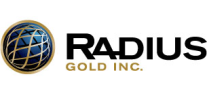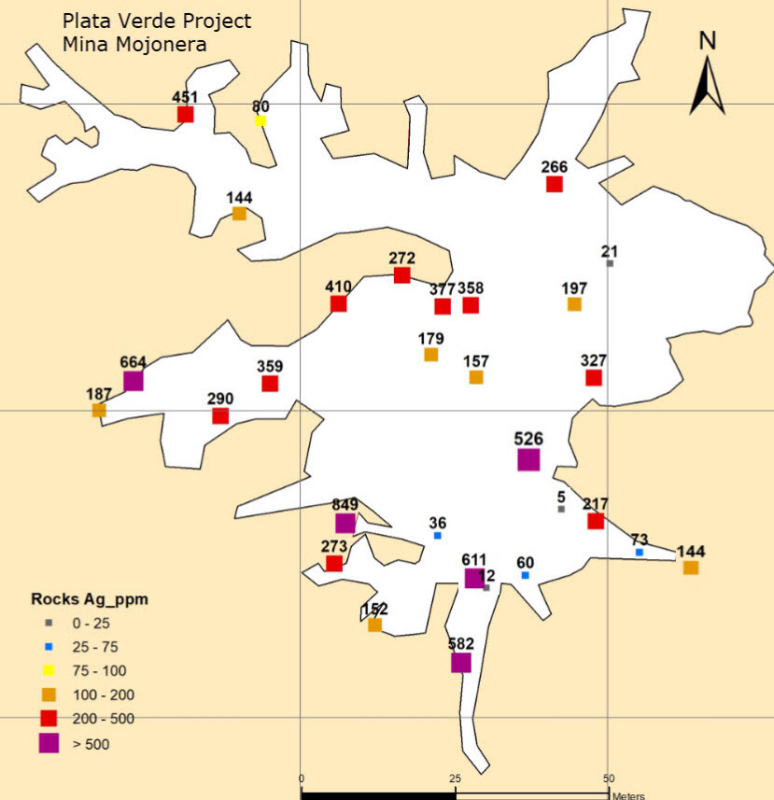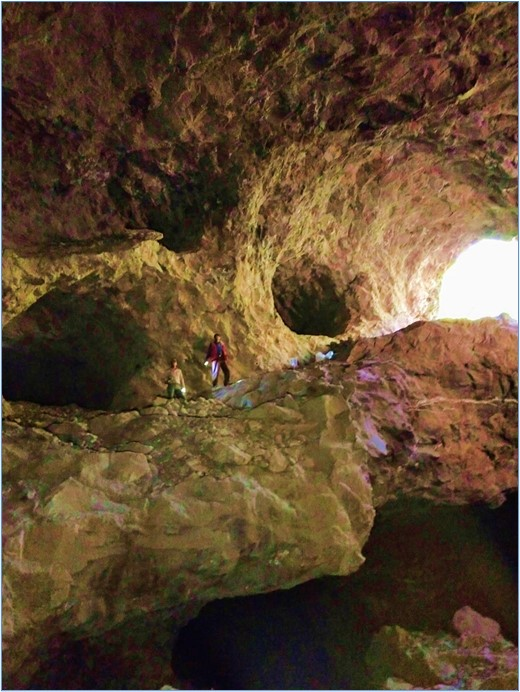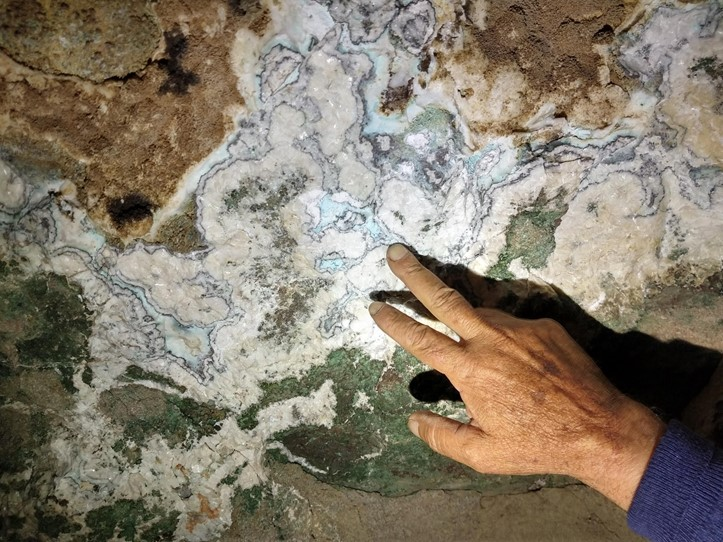Radius Gold re-discovers historic silver mining camp in Chihuahua, Mexico
(TheNewswire)



March 23, 2020 - TheNewswire - Vancouver, Canada - Radius Gold Inc. (TSXV:RDU) (OTC:RDUFF) is pleased to announce that the Company has entered into an option agreement with a local concession holder to acquire a 100% interest in a 300 hectare property covering an historic silver mining camp located in Chihuahua, Mexico.
Plata Verde
At the new project, named Plata Verde, Radius geologists have re-discovered an undocumented large scale underground bulk mining operation where in the late 1800’s, historic miners hand excavated an extensive series of anastomosing caverns, producing silver bars at an associated smelter operation. The project appears to be un-explored since the miners ceased their operations, and no references have been found within the Mexican Geological Survey. The few local residents have no knowledge of exploration companies working in the area and there are no indications of prior exploration within the mines or surrounding outcrops. Initial prospecting rock chips by Radius geologists have returned silver grades between 5 and 1070 g/t Ag.
Location
The Plata Verde project is located in Chihuahua, Mexico, north of Radius Gold’s Amalia Gold-Silver project and east of the historic Batopilas silver mining district (1708 to 1920) which reputedly produced over 300 million ounces of silver from high grade veins and structures. The property is accessible by road, with a 4 hour hike required to access the historic mines.
Geology and Mineralization
At Plata Verde, silver mineralization occurs as massive to crustiform banded barite calcite with silver chlorides, sulphosalt minerals and native silver infilling and cementing fractures and breccia within a basaltic/andesite extrusive volcanic. The basaltic/andesite host occurs at the base of the Upper Rhyolitic Volcanics of the Northern Sierra Madre. In general the host volcanics and associated silver mineralization is covered by the overlying rhyolitic ignimbrites and is only exposed along the length of a small creek.
On the eastern side of the creek a number of small entrances, hardly visible, lead to an extensive network of anastomosing mining tunnels and cavities. The mining and excavation was done by hand with hammer, chisel and black powder explosives, leaving behind large underground cavities up to 50m x 50m x 30m high. Throughout the mines roman numerals painted on the walls record up to 58 mining areas. The mining excavations define a strike extension of over 500m and up to 100m wide. The host volcanic unit is at least 60m thick. The southern extension is abruptly cut by a fault which forms a large cliff face. To the north, east and west the host volcanic flows and silver mineralization is covered by the ignimbrites, but remains open to unknown extent in these directions. On the opposite western side of the creek exposures of the mineralized unit host good silver grades.
Sampling results
Radius geologists have collected 110 prospecting rock chip samples with silver grades ranging between 5 and 1070 g/t Ag. Within the largest mining area, which has been named Mina Mojonera, 35 rock chip samples were collected from the walls and remaining pillars (2 x 2m panel samples or 2m chip channel samples) at stations approximately 10 to 20m apart covering the irregularly shaped +5000m2 mining area. These samples ranged from 5 to 849 g/t Ag and averaged 276 g/t Ag (figure 1 and 2). The silver mineralization contains no gold, low Sb and As and trace amounts of Pb, Zn and Cu.
Figure 1. Mina Mojonera rock chip sampling with silver assays in g/t Ag.
Figure 2. Mina Mojonera.
Figure 3. Plata Verde typical mineralization textures, crustiform banded barite calcite with silver chlorides, sulphosalt minerals and native silver infilling and cementing fractures and breccia. Note green silver chloride oxides after which the project was named. Sample from Mina Mojonera SAP015 358 g/t Ag.
Exploration Targets
The priority for Radius is to define the outcropping extents of the mineralization and to map and sample in detail all the known mineralized areas and mines. Most of the extensions are covered by rhyolitic ignimbrite volcanics so outcrop is limited. As the host basaltic/andesites are magnetic, and cover rhyolites are not, Radius plans to fly an airborne magnetic survey to help define the extensions of the host rocks under cover.
The barite/silver chloride mineralization appears to be a late stage low temperature mineralizing event with the source and feeder systems as yet unknown and an attractive exploration target. Barite and silver chloride are often part of the upper levels or supergene zone around large silver deposits. The solubility of barite and silver chlorides is low, and hence the source zone is likely to be close by or directly below.
At the Plata Verde project Radius has rapidly secured the property rights, completed formal access agreements with the local landowners and constructed a camp and communications. Detailed geological mapping and prospecting has commenced. Radius looks forward to expanding its knowledge of this exciting new discovery and developing drill targets.
Due to COVID-19 and associated travel restrictions, the project will not advance as quickly as normal. Radius has a Mexican geological team in Chihuahua and in the coming weeks our teams will decide how best to advance, based on the situation in Chihuahua and our team’s personal and family safety.
The Agreement
Radius can earn a 100% interest in the project by making staged payments totalling US$800,000 over four years with the final payment equal to $400,000 at the end of year four. An $8,000 signing payment has already been paid. The owner retains a 1% NSR which Radius can buy back for US$1,000,000.
Technical Information
Bruce Smith, M.Sc. (Geology), a member of the Australian Institute of Geoscientists, is Radius’s Qualified Person as defined by National Instrument 43-101 - Standards of Disclosure for Mineral Projects. Mr. Smith has worked in the field at Plata Verde, and prepared and approved the technical information contained in this news release.
Quality Assurance and Quality Control
Reported assays are rock chip and channels samples taken by Radius geologists and trained sampling teams. Sample intervals are generally 2m chip channels or 2x2m panels producing samples of between 2 to 9 kg. Samples are delivered to the ALS Geochemistry laboratory facilities in Chihuahua, Mexico. The samples are fire assayed for Au and are analysed for Ag and multi-elements using method code ME-ICP61 following a four-acid digestion. Overlimits are analysed using an appropriate method. Radius routinely inserts multi-element geochemical standards and blanks into the sample stream to monitor laboratory performance. Quality control samples submitted to ALS were returned within acceptable limits.
Radius Gold Inc.
Radius has a portfolio of projects located in Mexico, United States and Guatemala which it continues to advance, utilizing partnerships where appropriate in order to retain the Company’s strong treasury. At the same time, management is seeking out additional investment and project acquisition opportunities across the globe.
ON BEHALF OF THE BOARD
Simon Ridgway
President and CEO
Symbol: TSXV-RDU
Contact: Simon Ridgway
200 Burrard Street, Suite 650
Vancouver, BC V6C 3L6
Tel: 604-801-5432; Toll free 1-888-627-9378; Fax: 604-662-8829
Email: info@goldgroup.com
Website: www.radiusgold.com
Neither the TSX Venture Exchange nor the Investment Industry Regulatory Organization of Canada accepts responsibility for the adequacy or accuracy of this release.
Forward-Looking Statements
Certain statements contained in this news release constitute forward-looking statements within the meaning of Canadian securities legislation. All statements included herein, other than statements of historical fact, are forward-looking statements which include, without limitation; the exploration plans for the Plata Verde Project; the Company’s business strategy, plans and outlook; the merit of the Company’s investments and properties; timelines; the future financial performance of the Company; expenditures; approvals and other matters. Often, but not always, these forward looking statements can be identified by the use of words such as “estimate”, “estimates”, “estimated”, “potential”, “open”, “future”, “assumed”, “projected”, “used”, “detailed”, “has been”, “gain”, “upgraded”, “offset”, “limited”, “contained”, “reflecting”, “containing”, “remaining”, “to be”, “periodically”, or statements that events, “could” or “should” occur or be achieved and similar expressions, including negative variations.
Forward-looking statements involve known and unknown risks, uncertainties and other factors which may cause the actual results, performance or achievements of the Company to be materially different from any results, performance or achievements expressed or implied by forward-looking statements. Such uncertainties and factors include, among others, the plans for exploring the Plata Verde Project; changes in general economic conditions and financial markets; the Company or any joint venture partner not having the financial ability to meet its exploration and development goals; risks associated with the results of exploration and development activities, estimation of mineral resources and the geology, grade and continuity of mineral deposits; unanticipated costs and expenses; and such other risks detailed from time to time in the Company’s quarterly and annual filings with securities regulators and available under the Company’s profile on SEDAR at www.sedar.com. Although the Company has attempted to identify important factors that could cause actual actions, events or results to differ materially from those described in forward-looking statements, there may be other factors that cause actions, events or results to differ from those anticipated, estimated or intended.
Forward-looking statements contained herein are based on the assumptions, beliefs, expectations and opinions of management, including but not limited to: that the exploration activities at the Plata Verde Project will proceed as planned; that the Company’s activities will be in accordance with its public statements and stated goals; that all required approvals will be obtained; that there will be no material adverse change affecting the Company or its investments or properties; and such other assumptions as set out herein. Forward-looking statements are made as of the date hereof and the Company disclaims any obligation to update any forward-looking statements, whether as a result of new information, future events or results or otherwise, except as required by law. There can be no assurance that forward-looking statements will prove to be accurate, as actual results and future events could differ materially from those anticipated in such statements. Accordingly, investors should not place undue reliance on forward-looking statements.
Copyright (c) 2020 TheNewswire - All rights reserved.


